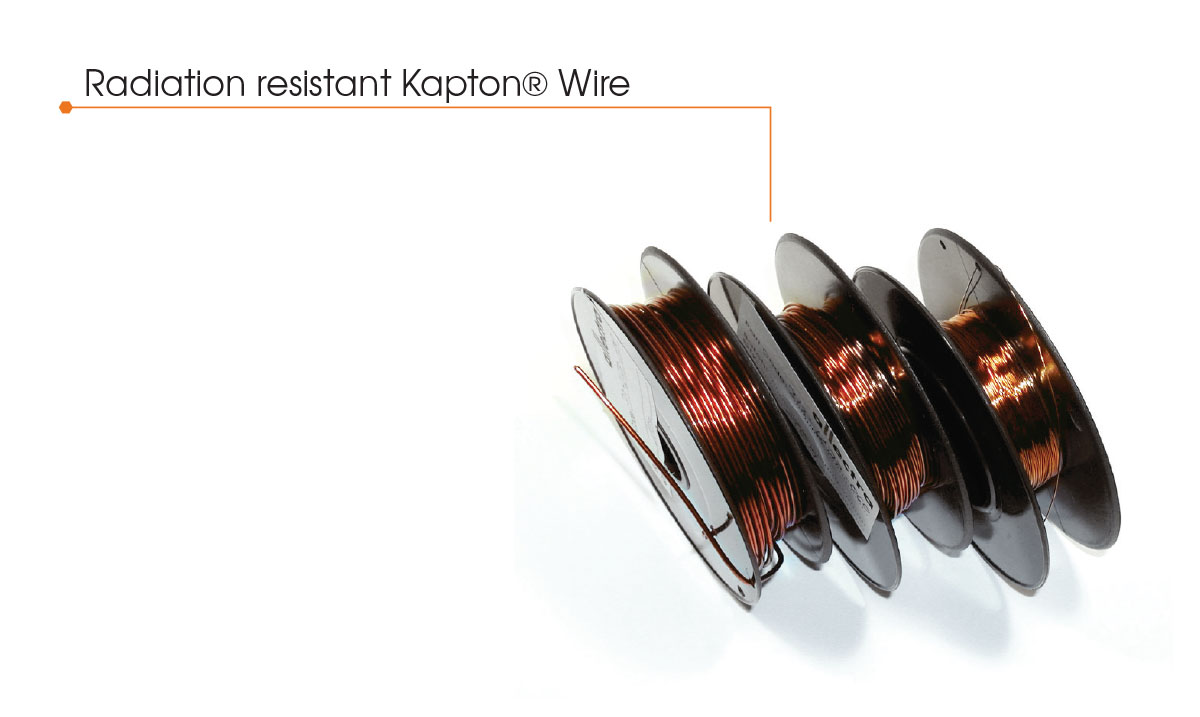Kapton-insulated wiring is an innovative solution for electrical systems that are expected to operate at extreme temperature or with low-outgassing. thresholds. Based on a proprietary, space-age polymer and conventional insulated conductor configurations, Kapton wires are ideal for vacuum system cabling, connectors, and accessories.
Allectra manufactures and supplies insulated Kapton wires for high-vacuum and ultra-high vacuum (HV/UHV) settings . Our Kapton wires range from ultra-thin wires suitable for use in sensitive equipment, all the way to wires for high voltage or currents. Allectra furthermore supplies coaxial cables, ribbon-type wires, single- and multi-strand wiring, and many more formats encapsulated in all using high-performance Kapton insulation. This enables us to satisfy the broadest possible range of end-user objectives, from low-cost classic solutions for budget-conscious process managers to robust radiation-resistant Kapton wires for demanding UHV applications.
In this article, we will take a broad look at the history and properties of Kapton insulation.

Brief History of Kapton Wires
Materials scientists and structural engineers are routinely tasked with balancing key thermomechanical properties that may seem mutually exclusive. Simultaneously increasing mechanical stability while reducing the weight profiles of finished parts, for instance, is a critical objective in a broad cross-section of research and development (R&D) applications. Combatting thermally-induced variations in electrical performance is another key area of study. Each of these long-term thermomechanical challenges underlay the development of Kapton.
Kapton was developed by DuPont in the 1960s, using a process known as step-growth polymerization of novel dianhydrides. Leveraging advanced fine chemicals in this manner yielded a flexible polyimide with outstanding thermodynamic stability across an unprecedented temperature range (4 – 637K), combined with low weight and exceptional dielectric characteristics. This manifold of properties made Kapton a natural fit for insulating high current wires.
The first adopters of Kapton wires were the aerospace and aviation markets, where high weight-to-performance ratios are essential to success. Yet the polyimide began to show a tendency towards degradation in hot, humid environments characterized by routine vibration. This posed an expensive problem for aircraft manufacturers as Kapton wiring was deemed largely unsafe by regulators like the Federal Aviation Administration.
Kapton Wires in Vacuum Environments
In the absence of humidity, and with limited chafing, Kapton wires can fulfil their promise of long-service across a demanding temperature range. This explains why they succeed in vacuum environments and have retained a competitive edge in spacecraft engineering while gradually being phased-out of aircraft.
The founders of Allectra played a key role in bringing Kapton-insulated wires to the vacuum world. Successful implementation of Kapton insulation by national space agencies like NASA fuelled an uptake of the use of Kapton wires being utilized in demanding environments such as vacuum processing and research. At Allectra, we continue to cater to the demand for Kapton-insulated cables and in-vacuum connectors and connectors for HV/UHV applications with a suite of products.
If you would like to learn more about our products, simply contact a member of the Allectra team today.
Kapton is a registered trademark of DuPont.
